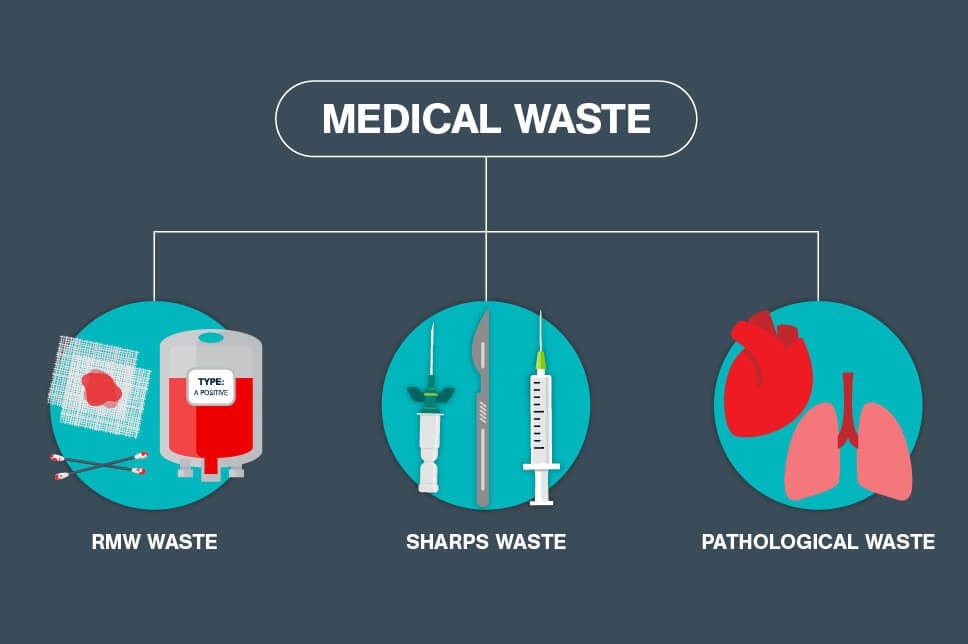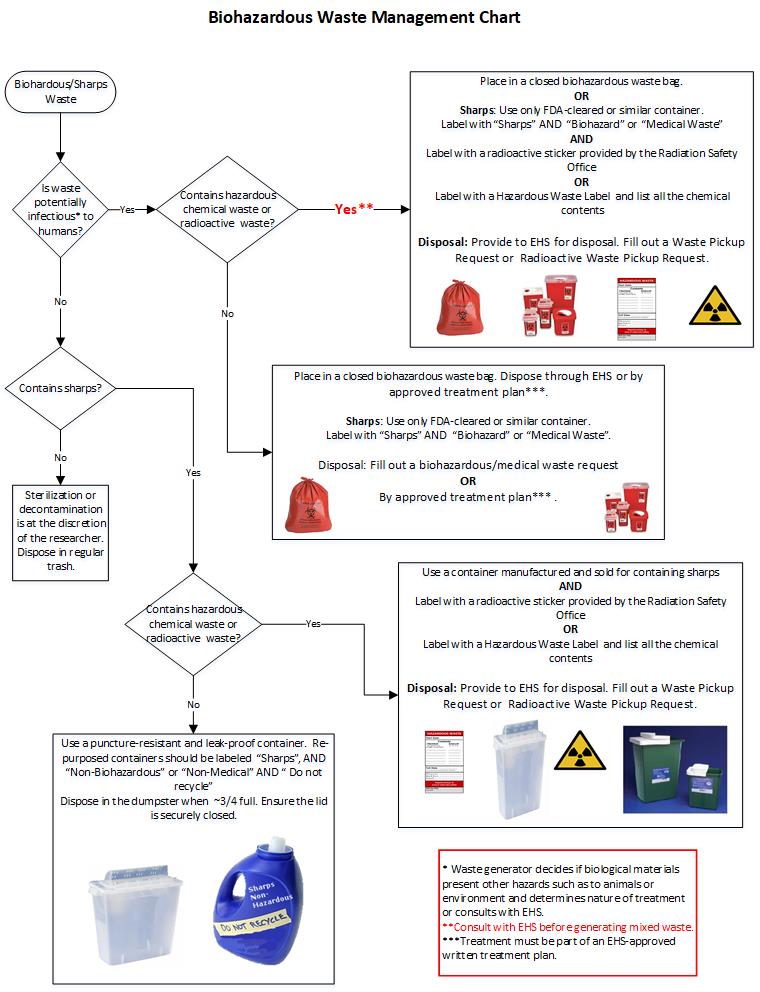Eco-Friendly Solutions for Medical Waste Removal: Prioritizing Safety and Compliance
Efficient Approaches of Medical Waste Disposal
Effective techniques of medical waste disposal are essential in preserving public health and wellness and environmental safety. Medical waste, consisting of sharps, pathological waste, and pharmaceutical waste, must be dealt with and taken care of appropriately to stop the spread of infections and protect the setting. This requires adherence to strict regulations and the execution of specialist waste administration methods.
Correct partition of medical waste, secure and risk-free storage, effective therapy and disinfection approaches, and environmentally-friendly disposal options are vital elements of an effective medical garbage disposal system. Specialist waste administration services play an important role in guaranteeing conformity with laws and lessening the threats connected with incorrect disposal. By employing these approaches, medical care centers can add to a much safer and cleaner atmosphere while guarding the wellness of the area.
Proper Segregation of Clinical Waste
Appropriate partition of clinical waste is vital for making sure the secure and efficient disposal of these potentially unsafe materials. Clinical waste refers to any kind of waste generated during healthcare activities, such as hospitals, centers, research laboratories, and research study centers. It consists of a wide variety of materials, such as utilized needles, syringes, contaminated dressings, ran out or unused drugs, and biological products.
By segregating medical waste, health care facilities can lessen the threat of infections, injuries, and ecological contamination. The process includes classifying waste into different types, such as sharps, infectious waste, pharmaceutical waste, and non-hazardous waste. Each kind requires specific handling, product packaging, and disposal techniques to avoid direct exposure to medical care workers, waste management employees, and the basic public.
To guarantee proper partition, medical care facilities need to establish clear guidelines and supply sufficient training to employee. This includes informing employees on the different waste groups, proper packaging strategies, and the use of suitable containers - WasteX Medical Waste Disposal. Additionally, clear signage and color-coding systems can be executed to facilitate the recognition and segregation of different waste kinds
Safe and Secure Storage of Medical Waste
Safe and safe and secure storage space of clinical waste is essential for preserving the honesty and control of potentially unsafe materials. Proper storage not only safeguards health care employees and the basic public from exposure to harmful materials but also stops ecological contamination.
To make certain safe storage, medical facilities should adhere to details standards. Waste must be saved in leak-proof and puncture-resistant containers that are labeled properly - medical waste removal.
Proper partition of medical waste is likewise crucial for risk-free storage. Different kinds of waste, such as sharps, transmittable products, and pharmaceutical waste, must be separated to stop cross-contamination. This segregation can be attained through the use of color-coded containers or containers.
Routine monitoring and evaluation of the storage space location are important to identify any kind of potential risks or violations. This consists of checking for signs of damage or degeneration in the containers, making sure correct ventilation, and keeping track of temperature and moisture levels.
Effective Therapy and Disinfection Methods

One commonly used therapy method is autoclaving, which involves subjecting the waste to high-pressure vapor at temperatures over 121 degrees Celsius. This process successfully eliminates bacteria and destroys transmittable representatives, providing the waste risk-free for further disposal. One more method is incineration, which entails shedding the waste at high temperatures. Incineration not only eliminates microorganisms but also reduces the waste quantity with burning.
Chemical sanitation is an additional effective approach for dealing with clinical waste. This method entails using anti-bacterials such as chlorine compounds, phenolic compounds, or hydrogen peroxide to kill or suspend microorganisms (WasteX Medical Waste Disposal). Chemical disinfection is typically used for liquid waste, such as lab samples or bodily fluids
In recent times, different treatment Check Out Your URL approaches such as microwave sanitation, irradiation, and biological therapy have likewise gained interest. These methods use advantages such as minimized environmental effect and power consumption contrasted to conventional techniques.
Environmentally-friendly Disposal Options
In the realm of medical garbage disposal, considering environmentally-friendly alternatives is important. Health care facilities create a considerable quantity of waste, including transmittable materials, drugs, and chemicals, which can position severe risks to human health and wellness and the environment otherwise taken care of correctly. Fortunately, there are numerous environmentally-friendly disposal alternatives offered that can aid reduce these dangers.
Reusing clinical waste involves setting apart and processing specific products for reuse or repurposing. In addition, some health care centers have implemented recycling programs for specific medical tools or devices, more reducing waste generation.
One more environmentally-friendly disposal option is waste-to-energy conversion. This approach includes transforming clinical waste into power with procedures like incineration or anaerobic digestion. medical waste disposal. Incineration, when done effectively with innovative modern technologies, can generate power while decreasing damaging discharges. Anaerobic digestion, on the other hand, breaks down organic waste in the absence of oxygen, generating biogas that can be made use of for power or warm generation.

Benefits of Expert Waste Management Provider
One significant advantage of expert waste monitoring services is the improved efficiency in getting rid of and taking care of of clinical waste. Health care centers produce a considerable quantity of waste that includes harmful materials, such as sharp objects, contaminated things, and potentially infectious waste. medical waste removal. Incorrect handling and disposal of clinical waste posture major wellness risks to workers, people, and the public. By using specialist waste management solutions, healthcare centers can ensure that all medical waste is managed and taken care of properly, reducing the threat of contamination and the spread of diseases.
Professional waste management services employ qualified and skilled workers who are well-informed about the policies and guidelines for clinical garbage disposal. They have accessibility to specific devices and tools that enable them to deal with different sorts of medical waste safely and effectively. These services also have reputable treatments and procedures in position to ensure that waste is segregated, packaged, transferred, and disposed of in compliance with neighborhood, state, and government policies.
Furthermore, professional waste monitoring solutions can supply health care centers with extensive waste management remedies. They can use services such as waste collection, transport, disposal, and treatment, tailored to the details requirements and demands of the facility. This gets rid of the worry of managing waste inside, enabling healthcare staff to concentrate on supplying quality person care.
Final Thought
In conclusion, efficient methods of medical waste disposal involve appropriate segregation, risk-free storage, treatment and disinfection, and environmentally-friendly disposal choices. These methods guarantee the risk-free handling and administration of medical waste, stopping the spread of infections and securing the setting.
Medical waste, including sharps, pathological waste, and pharmaceutical waste, should be dealt with and disposed of appropriately to stop the spread of infections and secure the atmosphere.Appropriate segregation of medical waste, risk-free and safe and secure storage, reliable therapy and disinfection approaches, and environmentally-friendly disposal alternatives are essential elements of an effective medical waste disposal system. The procedure entails classifying waste right into various types, such as sharps, contagious waste, pharmaceutical waste, and non-hazardous waste. By utilizing professional waste monitoring solutions, health care facilities can make certain that all medical waste is dealt with and disposed of correctly, minimizing the threat of contamination and the spread of conditions.
Expert waste management solutions utilize trained and knowledgeable personnel that are educated regarding the regulations and standards for medical waste disposal.